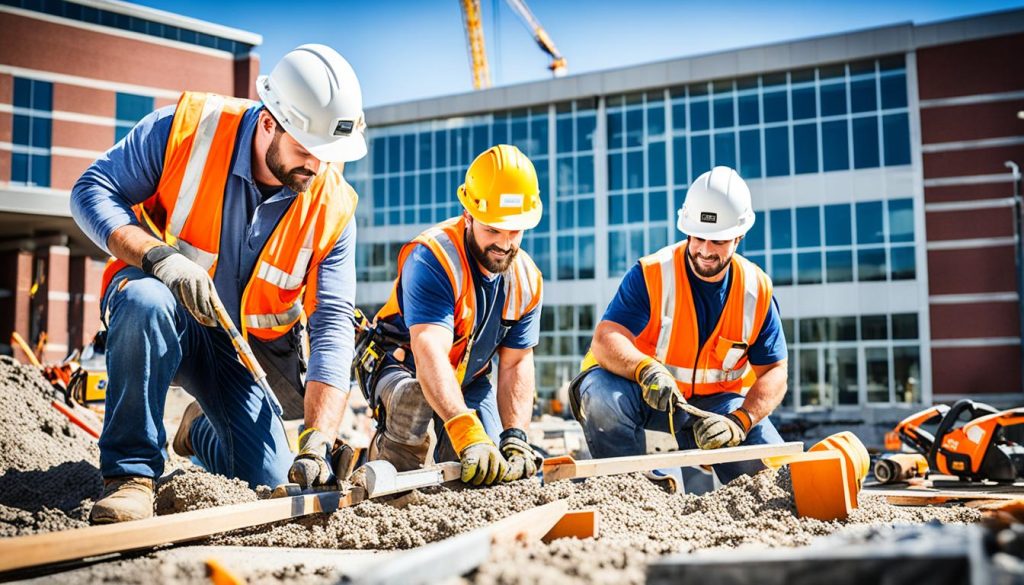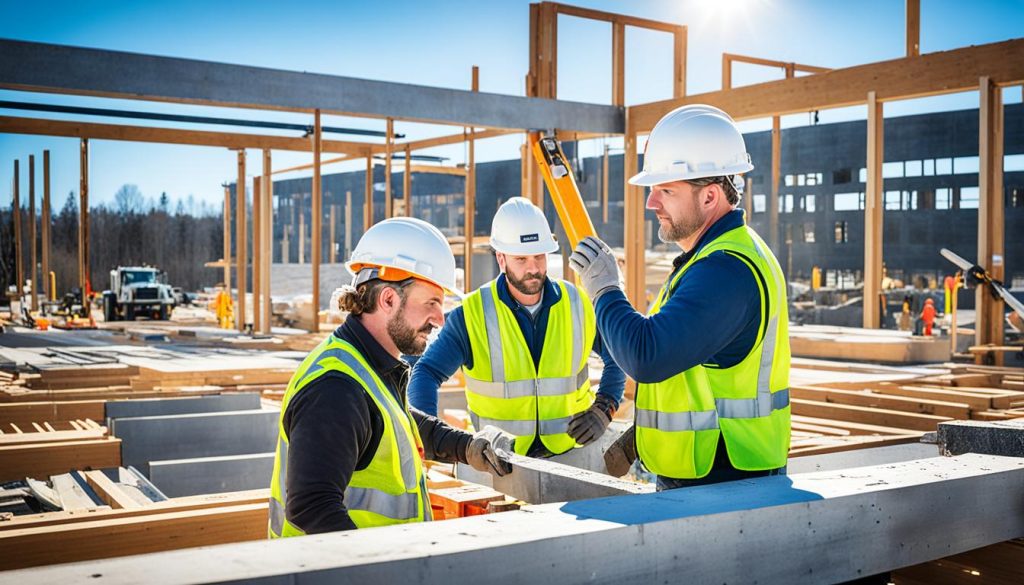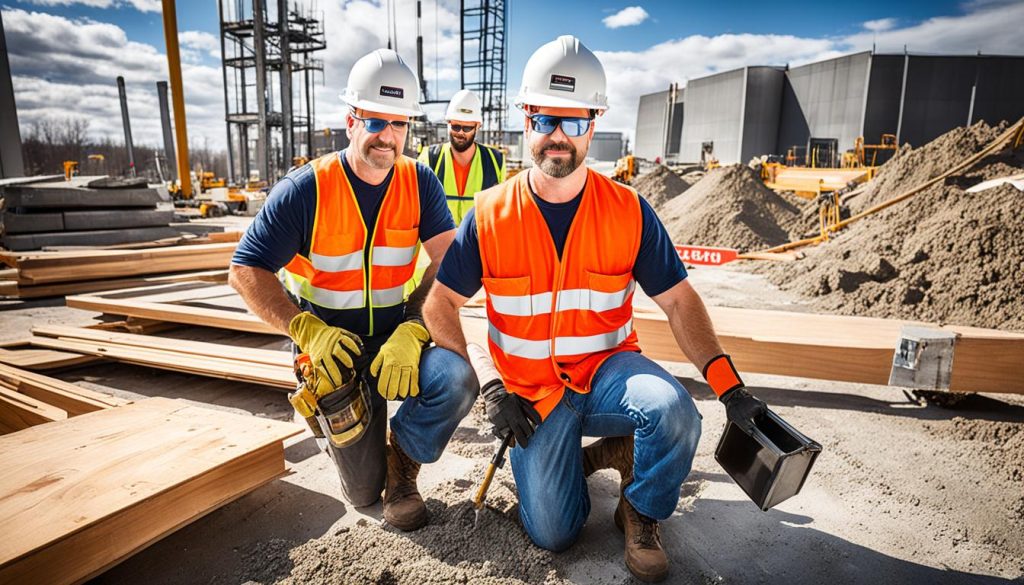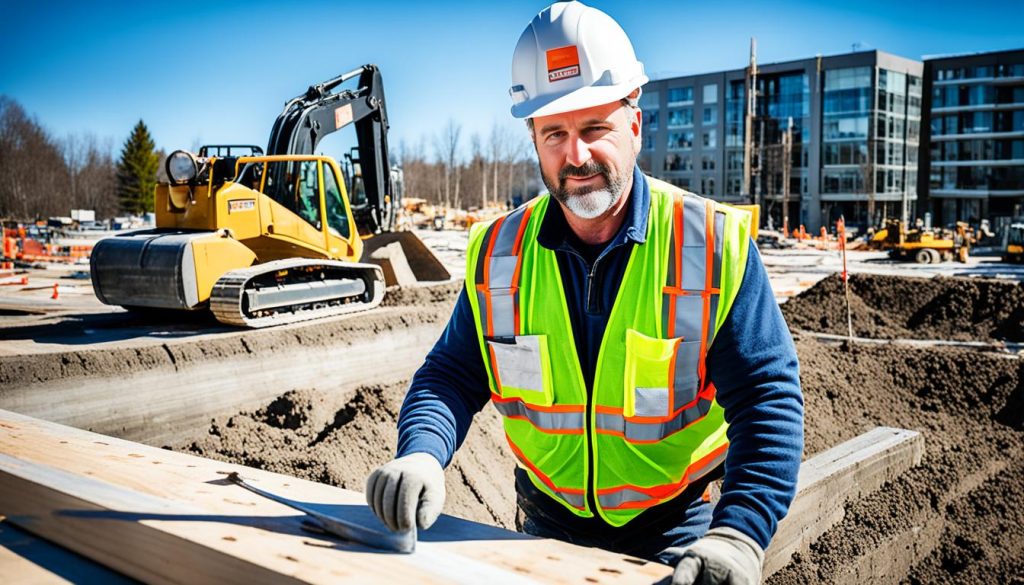Have you ever wondered “What is essential construction in Ontario” really means? With the rapid growth and development in the construction industry, it’s important to understand the different categories and regulations that govern construction activities in each province. In Ontario, essential construction refers to projects that are deemed necessary for the functioning, safety, and security of society. These projects play a vital role in infrastructure development, housing, and maintaining critical services. In this article, we will explore what essential construction entails in Ontario, the types of projects it encompasses, and the guidelines that need to be followed. Whether you’re a construction professional or simply curious about the industry, this article will provide you with all the essential information you need to know about essential construction in Ontario.
Understanding Essential Construction Services in Ontario
During the COVID-19 pandemic, Ontario has allowed essential construction activities Ontario to continue, even as other regions, like Quebec, adopted stricter lockdown measures. These decisions are pivotal as they sustain critical infrastructure and services, ensuring the province operates smoothly amidst unprecedented challenges.

1. Types of Essential Construction Projects
Essential construction projects Ontario encompass a broad array of critical works necessary for the province’s functionality. These projects include new facilities and expansions within the healthcare sector, such as hospitals and clinics, that are crucial during health crises. Additionally, essential projects span transportation networks, energy systems, and educational institutions. This wide range of essential construction activities Ontario secures the continued growth and stability of the region’s infrastructure.
- Healthcare facilities construction and renovation
- Transportation infrastructure, including transit systems
- Educational institution developments
- Province-critical infrastructure projects
2. Services Included Under Essential Construction
The range of essential construction services Ontario includes site preparation for new developments, maintaining operations of petrochemical plants, and the upkeep of utilities crucial for daily life. Heavy equipment repair, road construction, and maintenance are also categorized under essential services, ensuring the smooth functioning of the province’s infrastructure.
| Service Category | Examples |
|---|---|
| Site Preparation | Excavation, land grading |
| Petrochemical Plants | Operational maintenance, safety inspections |
| Utility Services | Water treatment, electricity distribution |
| Road Construction | Highway repairs, new road developments |
3. Impact on Non-Essential Construction Activities
The prioritization of essential construction services Ontario has significant impacts on non-essential construction activities. Projects deemed non-essential were mandated to halt, following health guidelines and provincial orders. This suspension has led to various challenges, including legal disputes over contract delays and site closures. Employers and contractors must navigate these complexities while adhering to evolving safety regulations and addressing workers’ health concerns.
- Temporary suspension of non-essential projects
- Legal implications and contract disputes
- Stricter health and safety protocols on active sites
- Increased health and safety inspections
Overall, these measures emphasize maintaining a balance between progressing essential construction projects Ontario and ensuring workers’ safety during the pandemic.
What is Essential Construction in Ontario?
In Ontario, essential construction is defined by government emergency regulations that prioritize activities supporting critical infrastructure and societal needs. According to Emergency Order O. Reg 82/20, effective May 4, 2020, essential construction encompasses a diverse array of projects.

Key examples of essential construction in Ontario include the building and expansion of healthcare facilities, schools, essential municipal projects, and infrastructure supporting transportation, energy, and justice sectors. Additionally, infrastructure projects for IT and telecommunication services are part of the essential construction list.
Demolition activities related to these projects are also included in the definition, provided they comply with the Building Code Act, 1992. This allows for the demolition of structures on land earmarked for essential constructions such as healthcare facilities, schools, or other critical developments.
The requirements for construction in Ontario further necessitate adherence to stringent health and safety regulations. Businesses active in essential construction must comply with laws including the Occupational Health and Safety Act, ensuring worker safety and addressing any health concerns on construction sites. Workers retain the right to refuse unsafe work, and protocols to resolve such issues are clearly outlined in legislation.
The closure of non-essential businesses in Ontario, enforced from April 4, 2020, underscores the focus on maintaining essential construction activities. As a result, specific construction projects tied to healthcare, provincial infrastructure, industrial activities, food production, and residential development continue to operate.
| Project Type | Essential Criteria |
|---|---|
| Healthcare Facilities | Construction and expansion projects |
| Municipal Infrastructure | Transit, transportation, energy, and justice |
| Food Production Facilities | Due to be completed before July 2021 |
| Residential Projects | Permits granted or renovations started before January 12, 2021 |
| IT and Telecommunications | Broadband internet, cellular technologies |
Understanding what is essential construction in Ontario and the requirements for construction in Ontario helps ensure that critical infrastructure projects progress seamlessly while maintaining public health and safety standards.
Ontario Construction Guidelines and Regulations
Understanding the regulatory framework for construction in Ontario is crucial for ensuring compliance and safety. Various authoritative bodies and laws provide the foundation for these guidelines and regulations.
1. Main Regulatory Bodies and Laws
The principal regulatory bodies enforcing Ontario construction guidelines include the Ministry of Labour, Training and Skills Development (MLTSD) and local municipal authorities. These entities oversee the implementation of the Building Code Act, 1992, which is fundamental in setting construction standards. The enforcement of these standards ensures that construction projects comply with critical infrastructure needs and safety protocols.

2. Key Regulations Under the Building Code Act, 1992
Key elements of the Building Code Act, 1992 encompass obtaining the necessary permits, adhering to structural and safety specifications, and maintaining documentation for inspections. The Act defines vital terms such as “competent worker” and sets forth detailed requirements for diverse construction activities, including excavations, tunnel work, and the use of safety systems like fall arrest mechanisms. This comprehensive approach ensures the integration of stringent safety standards into every phase of a construction project.
3. Adhering to the Occupational Health and Safety Act (OHSA)
The Occupational Health and Safety Act (OHSA) is another critical pillar in Ontario construction regulations. The OHSA mandates that employers provide a safe work environment and empowers workers with the right to know and refuse unsafe work. This legislation also requires the establishment of a Joint Health and Safety Committee (JHSC) on sites with 20 or more workers or appointing Health and Safety Representatives (HSRs) for smaller projects. Reporting obligations under the OHSA necessitate employers to document injuries and incidents, ensuring transparency and accountability on construction sites.
Essential Construction During COVID-19
Throughout the COVID-19 pandemic, essential construction in Ontario has operated under specific directives to ensure critical infrastructure, services, and public health measures are maintained. These directives, or emergency orders, detail the types of construction projects that are permitted to continue and the necessary health and safety protocols to protect workers and the community.

1. COVID-19 Emergency Orders Pertaining to Construction
The Ontario government issued a comprehensive list of essential construction projects on April 17, 2021, to ensure critical sectors remain functional. This includes projects related to health care, municipal and provincial infrastructure, energy, education, and more. For example:
- Healthcare sector or long-term care facilities
- Municipal and provincial infrastructure projects
- Electricity and energy sector developments
- Residential construction and broadband infrastructure
Such essential construction activities were necessary to address pressing needs and maintain societal function amidst the pandemic.
2. Health and Safety Measures for Construction Sites
Implementing construction health and safety measures COVID-19 was crucial to prevent virus transmission on worksites. This included enhanced sanitization, physical distancing, and the mandatory use of personal protective equipment (PPE). Employers have been required to adhere to these measures strictly, ensuring compliance with public health guidelines is mandatory. Incident reporting and investigation of work-related illnesses were also emphasized to maintain a safe environment.
3. Changes to Construction Protocols Due to COVID-19
Several changes to construction protocols due to COVID-19 were introduced to adapt to the emerging challenges. These included extended working hours for healthcare sector projects, such as allowing 24-hour operations, ensuring timely completion of critical infrastructure. Projects providing temporary additional capacity for food production and other essential goods were expedited to meet the urgent demand, showcasing the necessity of essential construction Ontario COVID protocols for public safety and continuity.
| Details | Numbers/Dates |
|---|---|
| Implementation of COVID-19 emergency orders construction directives | April 17, 2021 |
| Lifting limits on essential workplace construction | May 19, 2020 |
| Commencement of residential construction projects like apartments | May 11, 2020 |
| Extending construction hours for healthcare projects | April 7, 2020 |
| Essential construction sites closure time | April 17 at 12:01 a.m. |
Projects and Activities Deemed Essential
Essential construction activities across Ontario encompass various projects ensuring the province meets critical operational and developmental needs. This comprehensive approach includes institutional, municipal, commercial, industrial, and residential construction initiatives, all pivoting on priorities such as healthcare, infrastructure, and public welfare.
1. Institutional and Municipal Projects
Under the essential construction list Ontario, *institutional construction projects* take precedence. These include building or renovating schools, colleges, universities, and child care centers, which are vital for community development. Municipal projects, essential for sustaining local infrastructure like roadways and water systems, also fall into this category. Additionally, projects related to transit, transportation, and justice sectors ensure safe, reliable operations of critical provincial infrastructure.
2. Commercial and Industrial Developments
In the realm of commercial construction Ontario, activities are deemed essential if they support key economic sectors. This includes construction projects enhancing facilities for logistical support, IT services, telecommunications, and supply chain operations. Critical industrial projects, particularly those involving maintenance and operation of petrochemical plants and refineries, are crucial for maintaining industrial stability and expansion. Furthermore, developments aimed at increasing the capacity for food, beverage, or agricultural product production underscore their essential status, ensuring food security and supply chain resilience during emergencies.
3. Specific Residential Construction Scenarios
The essential construction list Ontario also extends to various residential construction Ontario projects. Notably, projects with footing permits issued before April 4, 2020, or those focused on public welfare, are allowed to continue. This includes single-family homes, condos, and mixed-use buildings. Below-grade multi-unit residential construction projects, such as apartments and condos, are likewise recognized as critical to meet housing demands. By deterring potential abandonment of half-finished projects, these regulations ensure ongoing construction continuity, vital for the region’s housing strategy.
| Category | Examples | Justification |
|---|---|---|
| Institutional & Municipal | Schools, Universities, Infrastructure | Critical for community and provincial operations |
| Commercial & Industrial | Logistical, IT, Petrochemical Plants | Support key economic sectors and supply chains |
| Residential | Single-family homes, Mixed-use buildings | Meet housing demands and public welfare |
Conclusion
The definition and regulation of essential construction in Ontario play a crucial role in maintaining infrastructure and public welfare, especially amidst crises like the COVID-19 pandemic. The construction industry in Ontario has had to adapt rapidly to health directives while keeping essential projects moving forward. This delicate balance underscores the importance of understanding which activities are vital, emphasizing both economic and societal priorities.
Worker safety remains a paramount concern as mandated by the Occupational Health and Safety Act (OHSA). Employers are required to take all reasonable precautions, including providing adequate training and supervision, to ensure that their workers are protected. Hazards on construction sites can lead to severe injuries or fatalities, making health and safety training on equipment use, emergency procedures, and safe work practices indispensable.
Regular inspections, the provision of personal protective equipment, and access to first aid and medical care are fundamental aspects of maintaining a safe work environment. The Ontario Ministry of Labour, Training and Skills Development offers various resources and support to help employers comply with health and safety regulations. Ultimately, prioritizing health and safety in the construction industry in Ontario not only prevents accidents but also boosts productivity and reduces costs linked to workplace incidents and lost time.
FAQ
1. What is essential construction in Ontario?
Essential construction in Ontario includes specific projects and services that are crucial during emergencies, such as the COVID-19 pandemic. This encompasses healthcare facilities, critical provincial infrastructure maintenance, and other key activities necessary for public health and safety.
2. What types of projects are considered essential construction in Ontario?
Essential construction projects in Ontario include new facilities and expansions in the healthcare sector, critical provincial infrastructure, institutional projects such as schools, and specific residential developments. Demolition activities are also considered essential if related to permissible projects.
3. What services are included under essential construction in Ontario?
Essential construction services in Ontario include the maintenance of critical infrastructure, site preparation for various developments, the operation of petrochemical plants, and construction activities related to IT services and municipal infrastructure.
4. How do Ontario construction guidelines affect non-essential activities?
Non-essential construction activities in Ontario are often subject to closures and must adhere to stringent health and safety guidelines. This can lead to delays, legal litigations, and civil disputes due to ambiguities in the essential services list.
5. What are the requirements for essential construction in Ontario?
Essential construction in Ontario must comply with various laws, such as the Building Code Act, 1992, and follow public health recommendations. The projects need to meet the specific criteria outlined in the government’s emergency regulation list.
6. Which regulatory bodies enforce construction guidelines in Ontario?
The principal regulatory bodies for construction guidelines in Ontario include the Ministry of Labour, Training and Skills Development and municipal authorities. The Building Code Act, 1992, and the Occupational Health and Safety Act (OHSA) are key regulatory frameworks.
7. What are the key regulations under the Building Code Act, 1992?
The Building Code Act, 1992, outlines regulations regarding permits, compliance with critical infrastructure needs, and safety standards, ensuring that construction activities are performed safely and within legal parameters.




